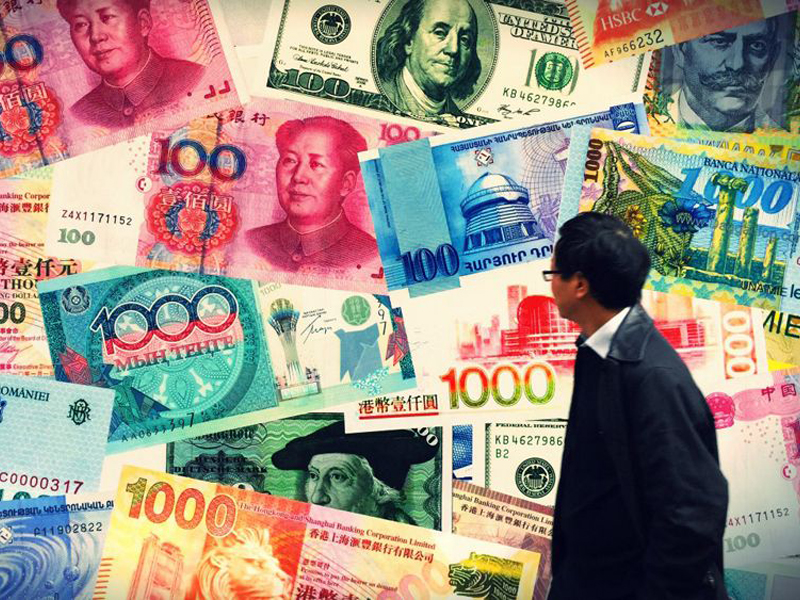The issue of RMB has once again become the focus of manufacturing industries such as textiles and clothing

The current pricing and settlement capabilities of the RMB are particularly limited, and the U.S. dollar, euro, etc. are still important settlement currencies in my country’s exports of fabrics and workwear. From the current point of view, the positive effect of RMB on the export of fabrics and workwear has not yet been fully demonstrated.
Before the implementation of the RMB cross-border foreign trade settlement pilot program, all exports of fabric workwear were settled in foreign currencies, and export settlement was completed in two steps: export exchange collection and export settlement. If the foreign exchange pricing and settlement method is adopted, the short-term substantial depreciation of foreign exchange will bring greater exchange losses to the export of fabrics and workwear.
The post-RMB exchange rate will have a positive impact on the export of fabric workwear, such as reducing exchange rate risks. However, the development of this positive effect is subject to whether fabric workwear export companies have pricing power in export trade negotiations and the extent of the RMB.
On September 20, the People’s Bank of China issued an announcement authorizing the New York Branch of the Bank of China to serve as the U.S. RMB clearing bank. This not only marks a new level of Sino-US financial cooperation, but is also another important milestone in the process of RMB.
As a large economy, the U.S. market has always been a battleground for military strategists. The establishment of the RMB clearing bank will further facilitate the use of RMB and cross-border transactions in the United States, and promote Sino-US two-way trade, investment and economic cooperation to a new level.
On October 1, the RMB was officially included in the International Monetary Fund (IMF) Extraordinary Drawing Rights (SDR), paving the way for the RMB. The RMB has officially joined the SDR currency basket, which means that both the IMF itself and its 189 member countries theoretically recognize the RMB as a reserve currency.
As industries and capital go abroad through the “One Belt, One Road” initiative, the RMB is also accelerating its pace. Experts pointed out that the population of countries along the “One Belt and One Road” accounts for 60% of the total population and nearly 30% of the total economic volume. The “Belt and Road” strategy will help form a “RMB zone” in this long-span economic corridor.
For example, in December 2015, the RMB-Somoni exchange rate listing transaction was successfully held. Enterprises, individuals and banks in my country’s Xinjiang and Tajikistan can use their own currency and the other country’s currency in financial settlements such as trade settlements. This is also an important sign that Xinjiang actively carries out economic and financial cooperation with Tajikistan and serves “going global” enterprises. .
For another example, in September 2015, the Kashgar region of Xinjiang successfully launched the inter-bank cash exchange rate trading of RMB and Pakistani rupees, and held a launching ceremony at the Kashgar Branch of Bank of China. This will not only provide convenient conditions for the settlement of trade and investment funds between New Zealand and Pakistan, but will also effectively expand the transaction channels for customers of both parties and expand the scope of financial cooperation.
Recently, reporters exclusively interviewed Liang Yanfen, director and researcher of the Economic Research Institute of the Ministry of Commerce Research Institute, to explore the above three financial events and their impact on China’s fabric workwear export companies.
Depending on the degree, currency can be divided into three levels: as a pricing and settlement method for international trade; as a tool for international investment and international lending; and as one of the currencies of other countries’ foreign exchange reserves.
What proportion of the RMB will be included in the International Monetary Fund this time? Liang Yanfen explained to reporters: “SDR is a reserve asset and accounting unit created by the IMF. Before the RMB was added, it was mainly composed of the US dollar, It consists of four currencies: the euro, the Japanese yen and the British pound. Their shares in the SDR currency basket are 41.9% for the U.S. dollar, 37.4% for the euro, 11.3% for the British pound, and 9.4% for the Japanese yen. After the entry of the RMB, its share was 10.92%, and the U.S. dollar , the euro, the Japanese yen, and the British pound were adjusted accordingly to 41.73%, 30.93%, 8.33%, and 8.09%, which were 0.17, 6.47, 3.21, and 1.07 percentage points lower than before respectively. According to IMF rules, the weight of the basket currencies in the SDR It is not static. As the use of currencies in trade and finance changes, the IMF adjusts the share of each currency in the SDR every five years.”
Regarding the positive effect that the RMB’s inclusion in the SDR as an international reserve currency will have on Chinese fabric and workwear export companies, Liang Yanfen made predictions from two aspects: “First, joining the SDR means that the RMB has gained international The recognition and IMF’s credit endorsement have given China’s fabric workwear manufacturing industry new credit support and guarantee in international financing, which will help Chinese companies’ overseas financing; secondly, joining SDR will help enhance the market’s understanding of the RMB confidence, stabilize market expectations, and further expand the use of RMB in cross-border trade and investment settlement, which will be beneficial to the stability of the RMB exchange rate, and will especially help stabilize the overseas assets of Chinese fabric and workwear companies.”
AAASDFWETGD
Disclaimer:
Disclaimer: Some of the texts, pictures, audios, and videos of some articles published on this site are from the Internet and do not represent the views of this site. The copyrights belong to the original authors. If you find that the information reproduced on this website infringes upon your rights, please contact us and we will change or delete it as soon as possible.
AA






